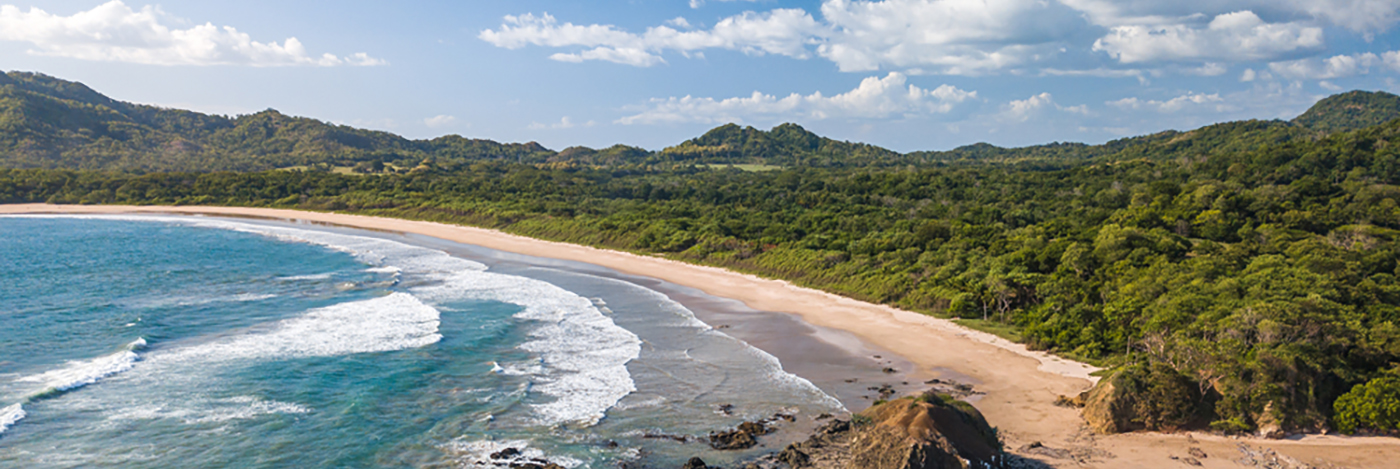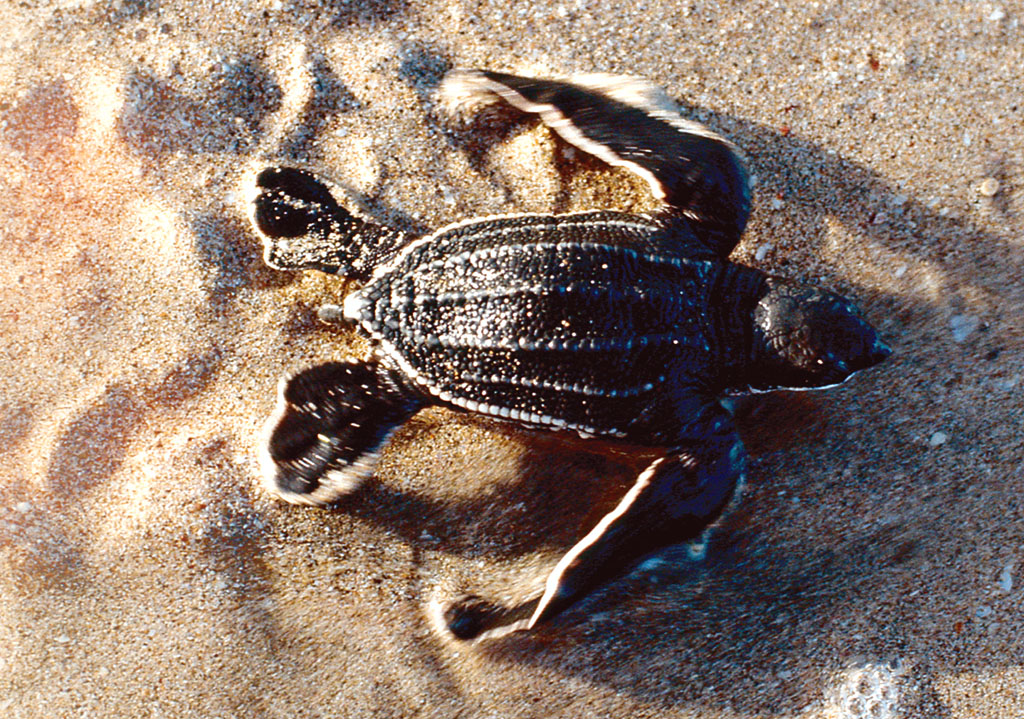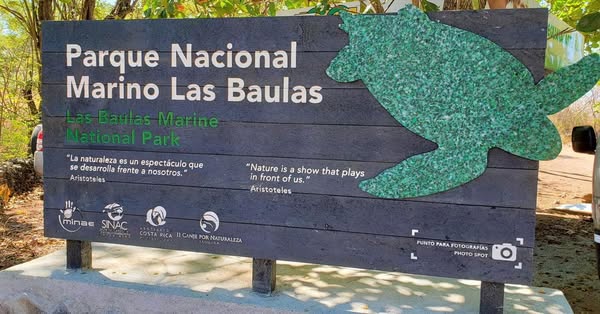

A Sanctuary for Sea Turtles and Marine Biodiversity in Guanacaste, Costa Rica
Tucked along the Pacific coast of Guanacaste, Las Baulas Marine National Park (Parque Nacional Marino Las Baulas) stands as one of Costa Rica’s most important coastal conservation areas. Established in 1991, the park was created primarily to protect the nesting grounds of the critically endangered leatherback sea turtle (Dermochelys coriacea), but over time, it has evolved into a key refuge for a wide array of marine and coastal species.
 Spanning both terrestrial and marine ecosystems, Las Baulas is not only a vital nesting site but also a biologically rich area that plays a crucial role in the health of the larger Pacific coastal environment.
Spanning both terrestrial and marine ecosystems, Las Baulas is not only a vital nesting site but also a biologically rich area that plays a crucial role in the health of the larger Pacific coastal environment.
The park's name, Las Baulas, comes from the leatherback turtles that return to its beaches year after year to nest. These giant sea turtles, which can reach lengths of over two meters and weigh up to 700 kilograms, make epic migrations across the Pacific Ocean—some traveling thousands of kilometers—from distant feeding grounds to return and lay eggs on the very beach where they were born.
The most important nesting beach in the park is Playa Grande, one of the largest nesting sites for leatherbacks in the Eastern Pacific. From October to March, female turtles come ashore at night to lay their eggs, digging deep holes in the sand and carefully covering them before returning to the sea. During peak season, conservationists and trained guides lead night tours, allowing visitors to witness this incredible event under strict regulations to ensure minimal disturbance.
Other turtle species, including olive ridley, hawksbill, and green turtles, also use the park’s beaches for nesting, although in smaller numbers.
Las Baulas Marine National Park isn’t just about sea turtles. The park encompasses over 43,000 marine acres (more than 17,000 hectares), which include coral reefs, estuaries, mangrove swamps, coastal dry forests, and open ocean habitat.
• Playa Grande, Playa Langosta, and Playa Ventanas: Vital nesting beaches and scenic shorelines ideal for low-impact ecotourism.
• Tamarindo Estuary (Estero de Tamarindo): A mangrove-rich estuarine system teeming with birdlife, crocodiles, and fish nurseries.
• Coral reefs and marine zones: Home to colorful reef fish, rays, eels, sea stars, and other marine species that form part of the coastal food web.
This mosaic of habitats supports not only turtles but a wide diversity of wildlife from shorebirds and wading birds like herons and egrets, to marine mammals such as dolphins and occasional migrating whales.

The park has long been a center for marine research and conservation, particularly around sea turtle behavior, nesting patterns, and threats. Biologists have worked in collaboration with local communities, park rangers, and international organizations to tag, monitor, and protect nesting turtles, while also engaging in habitat restoration and public education.
Community involvement is key to the park’s success. Through eco-tourism, sustainable development, and education, locals are empowered as stewards of the environment, benefiting from the park’s existence while helping ensure its protection.
However, challenges remain, including coastal development pressure, pollution, and climate change, all of which threaten turtle nesting success and the integrity of marine ecosystems. Continued vigilance and adaptive management are essential to protecting this precious area.
Located just north of the popular town of Tamarindo, Las Baulas is easily accessible to visitors looking for a more meaningful and nature-focused beach experience. Activities include:
• Night turtle tours (seasonal)
• Kayaking through the Tamarindo Estuary
• Birdwatching in the mangroves
• Snorkeling and tidepool exploration
• Nature walks along the beach and forested trails
Visitors are encouraged to follow conservation guidelines, especially during turtle nesting season, when lights and noise must be minimized to protect the turtles.
Las Baulas Marine National Park is more than just a national treasure—it’s part of a global effort to preserve marine biodiversity and endangered species. As the leatherback turtle faces extinction due to bycatch, climate change, and habitat loss, parks like Las Baulas offer a rare and critical lifeline.
By protecting this unique ecosystem, Costa Rica continues to demonstrate its leadership in sustainable tourism and biodiversity conservation, reminding the world of the power of preservation and the beauty of coexisting with nature.
Whether you’re a wildlife enthusiast, a beach lover, or a conservation-minded traveler, Las Baulas Marine National Park offers a powerful and unforgettable experience—one that connects you directly to the rhythms of the sea and the timeless return of the turtles.
